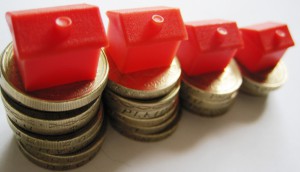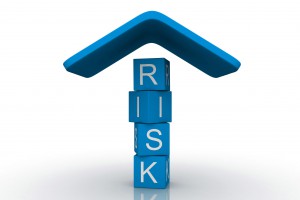It’s the age-old argument: do you invest for capital growth or cash flow?
While most investors understand the benefits of capital growth properties, some feel they need the cash flow to stay in the game.
The problem with this is that it’s really hard to grow your wealth with cash flow.
You see…it’s the capital growth of your investments that delivers the equity you require for your next deposit and it’s the steadily increasing rental returns you receive from high growth properties that helps your cash flow.
The problem is that most good investment properties are cash flow negative for the first few years of ownership.
That is, the rental income you receive is not enough to cover all of the property’s outgoings – your mortgage, rates, agent’s commissions etc.
Sure you can claim a tax deduction for this negative gearing, but many investors can’t afford to or don’t want to commit to meeting a cash flow deficit every month from their income.
There can be a number of reasons for this:
Some are at a high expense stage of their lives with a single income while one partner is on maternity leave, or they require the cash flow to pay for school fees, or they might feel more comfortable channeling all their surplus cash flow into lowering their home loan.
Well, there is a way to get the best of both worlds – there is a financing solution that will allow you to own high growth properties and service the cash flow shortfall.
By the way…there is nothing new about this
It’s the way I’ve structured my property investment loans for over 20 years and the way most successful investors have set up their finance.
Almost any lender or mortgage broker can do this for you – but many won’t -because they don’t fully understand the concept.
It all has to do with having the right loan structure
Just to make things clear – negative gearing is NOT an investment strategy – it’s a result of how you finance your property.
If you had a lower loan to value ratio or no debt at all against your high growth property you’d be positively geared (your rent would be more than your outgoings.)
But most of us want us much finance as the banks will give us to allow us to buy more or bigger properties.
Here’s the trick:
The loan structure I’ve used for years to manage my negative gearing is to set up a Line of Credit.
This loan facility is essentially like having a big credit card that I can use for any purpose – but I don’t.
I only use it to pay to the negative shortfall of my property portfolio each month such as the interest on the property investment loan, or for property expenses and most importantly to have as a “rainy day financial buffer” to buy me time if the markets turn sour.
The good news is that unlike a real credit card no repayments are needed on this Line of Credit loan, but of course the interest is added to the balance outstanding and is tax deductible if used for the purpose of running your property investment business.
However it’s important that you set up your structures correctly to ensure you can claim the tax deduction, so it’s critical to seek professional advice.
You’ll be using a common business principle
While borrowing money to pay interest and outgoings goes against the grain for many investors, it’s actually a common business principle called borrowing “working capital.”
Imagine you bought a new business – let’s say a Coffee Bar in the local shopping centre.
You’d probably go to the bank and ask for a loan for the goodwill of the business, the stock and the equipment you need to buy and, knowing that your new business would not be profitable for a few years, you would ask for some extra money, probably in a Line of Credit, as working capital for the first couple of years until the business produced positive cash flow.
There is really nothing different with borrowing “working capital” in a Line of Credit for the first couple of years of your property investment business.
The trick is you need equity
Obviously you must have sufficient equity in your existing properties to set up this strategy.
You must have something to use as collateral for the banks to give you a Line of Credit.
This could be untapped equity in your home or your existing investment properties.
It could work something like this….
Imagine you bought your home eight or 10 years ago the $400,000 and today it’s worth $800,000.
You also paid down part of your mortgage which means you could easily borrow $225,000 against the unused equity in your home.
You could allocate this $225,000 as follows:
- $100,000 as a deposit for your new investment property and you’d borrow the balance of the purchase price using your new property as security
- $25,000 as acquisition costs for your new investment property
- $45,000 to renovate your new property, thereby increasing your rental return and manufacturing some capital growth
- $55,000 as a financial buffer (in your Line of Credit) to cover you negative cash flow shortfall for 3 or 4 years
Don’t get caught up with the numbers
Now the exact numbers aren’t important, however what is important is that you understand the principles:
- Untapped equity in your existing properties is a tremendous asset because it gives you the opportunity to invest without you needing to contribute any cash
- Rather than gearing to the max, strategic investors take a more prudent approach by building an emergency buffer to buy themselves time to ride through the storms or cover their negative cash flow shortfall
- It’s best to set up the structures before you need them, because this type of loan structure provides you with choices
While you may be able to cover the negative gearing shortfall from your income, having a rainy day buffer will protect you if interest rates rise, prolonged vacancies occur or unexpected costs or situation creep up
There is a catch:
However – correct asset selection is critical!
You need to be investing in “investment grade” properties so you can maximise the chances of enjoying strong capital growth.
Sure the value of your properties won’t increase each and every year, but in the long term the value of your properties must increase substantially more then the cost of holding and funding them (remember each year your outstanding loan balance increases as you add the cost of your interest payments to your loan amount), otherwise this strategy makes no sense.
What are the risks?
The four main risks I see with this strategy are:
- Rising interest rates – while rates are likely to remain low for a while, they will once again increase in the future, but this will most likely occur because our economy will be doing well and property values will be increasing strongly and the RBA will want to slow down the property markets
- Borrowing more than you can afford – remember you’re really borrowing 100% of the cost of your new investment property and then also borrowing the negative cash flow for the first few years
- Using the funds for something else – I’ve see inexperienced investors not having the required discipline and dipping into their lines of credit to pay for vacations, toys (cars, jet skis etc.) or speculative endeavours such as share trading or investing in options
- Low capital growth – remember we’re moving in to the next stage of the property cycle where capital growth is not assured for all properties. Again, that’s why selecting an “investment grade” property is critical
Financial Stability
While some would argue this strategy is risky, I see it my Line of Credit as a buffer that gives me consistent financial stability regardless of the ups and downs of world markets, the local property markets and the bank’s funding vagaries.
It buys a me time by covering the interest rate shortfall and allowing me to hold on to my properties till the market eventually picks up.
Build a buffer or buy a bargain
The other beauty of being financially prepared with a buffer is that when everyone else puts the brakes on and competition in the housing markets dries up, you will be in a position to nab the bargain priced opportunities that abound, by using some of your Line of Credit as a deposit on your next property investment.
Remember – you need to be proactive with your financial strategy and be in control of your situation before things turn sour.
By doing so, you will ensure that you remain sheltered from the next world economic storm and avoid the panic that many will feel when one day again, the local or global situation worsens.
What are you going to do in 2016?
Are you going to take advantage of the property markets in 2015 or are you going to get caught by the traps ahead?
If so and you’re looking for independent advice, no one can help you quite like the independent property investment strategists at Metropole.
Remember the multi award winning team of property investment strategists at Metropole have no properties to sell, so their advice is unbiased.
Whether you are a beginner or a seasoned property investor, we would love to help you formulate an investment strategy or do a review of your existing portfolio, and help you take your property investment to the next level.
Please click here to organise a time for a chat. Or call us on 1300 20 30 30.
When you attend our offices you will receive a free copy of my latest 2 x DVD program Building Wealth through Property Investment in the new Economy valued at $49.





No comments:
Post a Comment